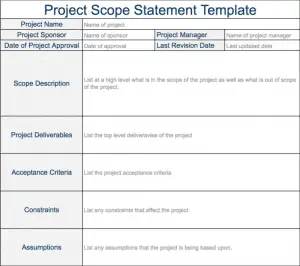If you work for a large organisation, let me ask you a simple question about the current project or program you are working on. Why were the people within your team chosen to participate on this effort?
If you’re like most people, it’s likely that your answer is going to be that the team was simply thrown together. Does the following sound familiar? The senior managers issued a directive to perform a certain piece of work. The functional directors or heads then started to assign members from their team to participate in the work. They did this by looking at who was available, and depending on the importance of the initiative, who could be trusted to deliver.
Projects and programs are complex animals. No two projects are the same and they contain inherent risks because of this. People play a critical role in the success or failure of the project, and are expected at all levels to understand the tradeoffs between scope and quality. If you’ve ever been part of a great team then it’s likely you’ll remember this positive experience fondly. Great teams always seem to deliver even when facing very high odds of failure. This information should not surprise anyone reading this. It seems to me that everyone within organizations is aware that great teams can deliver great things.
Given that everyone seems to know that great teams deliver great things, then it’s surprising to find that most teams are simply thrown together. Teams should be made up of people who are committed to the product, especially as the work is risky. Imagine how different your current project would be if everyone involved was fully committed to the work, and couldn’t wait to get their hands on the final product and use it in their everyday life. As everyone working on the project would be naturally motivated, I’d argue that that the product would not only meet the customer’s needs better, but would be delivered on time.
So how might an organization go about getting this commitment on each of its initiatives? One method might be to encourage the use of social networking within the organization, allowing communities of interest to form. We could have communities for employees interested in playing guitar, jogging, vegetarian cooking, sailing, and all manner of other hobbies. In a large organization with thousands of employees it’s not hard to imagine that these communities could prosper.
Now imagine that we could tap these communities to create project teams and you might be beginning to see the benefits this approach could bring to organizations. As an example let us consider Garmin, a large organization and the manufacturer of navigation equipment. Suppose that they are looking to build an innovative type of navigation device aimed at the amateur sailing community. We could post our available roles within Garmin’s sailing community and allow employees to apply for these roles.
It’s not difficult to see that a project team working on a sailing navigation device comprised of keen amateur sailors would be naturally motivated to make both a great product and deliver on time. I know nothing of Garmin’s business, but assume that a navigation device aimed at amateur sailors wouldn’t generate a huge percentage of Garmin’s revenues, and as such would not be a key strategic initiative for Garmin. This is where the idea of tapping into a social network could be very effective, as we could create a committed team without having to assign the organisations so called “best people” to the project.
If you had a large number of applicants for the team then it would be a good idea to use techniques such as Myers-Briggs Type Indicators or Belbin Team Roles to create a balanced team and further increase the project’s chances of success. Even if you didn’t manage to create a program or project team from the pool of resources available in the social network, you have a ready-made team of excellent testers available within the community.
I should point out that I do not know if this technique is used at Garmin or any other organization, but seems to me like a good idea. If you have had experience of this approach in practice then I’d be very interested to hear from you.










